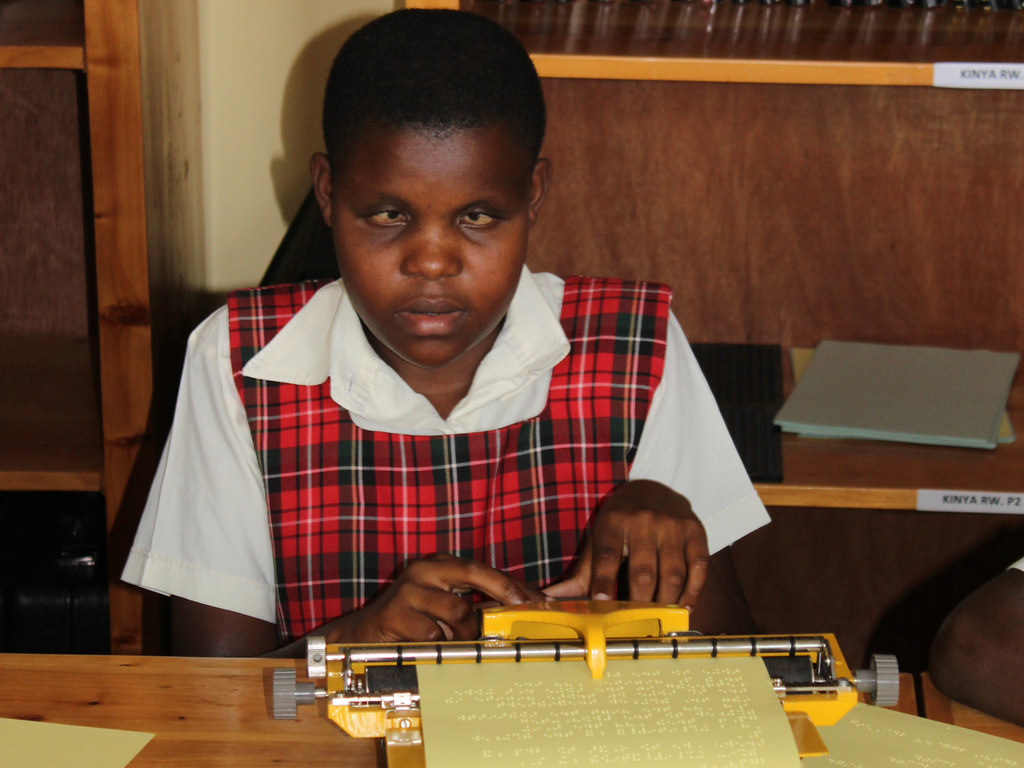One way to become acquainted with the problem of blindness is to put on a blindfold for a few minutes. Could you dial a telephone or eat a meal neatly? Could you find your way around the house or tell a penny from a dime? With his sight gone, the blind person must learn to use his other senses so skillfully that he can do all these things.
Blindness does not permit a person to move as quickly as he would if he could see and a blind person may have to seek assistance. For instance, if you have a friend who is blind, you would help him in several ways – offering your elbow and leading him, helping him locate the foods on his plate by imagining the plate as a clock and so on.
However, it is also important to give him every chance to be as independent as he wishes to be.
Blindness In The World

Recent statistics reveal that the world probably has at least 43 million blind people. It is hard to know the exact number because no single definition of blindness is accepted and used throughout the world.
There are many degrees of blindness. Some people cannot even see the light. Others can only tell light from dark. Still others have a small amount of vision. In some countries only those who cannot see at all are considered blind. But in other countries people who have a very limited degree of sight are also considered blind.
We know, however, that in countries where the diseases causing blindness are not controlled and medical care is lacking, the rate of blindness is highest. The countries that have the largest number of blind persons in proportion to their population are Indonesia, Saudi Arabia, Yemen, India, Pakistan, Tanzania and Nigeria. The lowest rate of blindness is in Norway, Denmark and Sweden.
Education Of The Blind

The first school for the blind was started in France in 1784 by Valentin Hauy. Later several other schools were founded in Europe. Three schools for the blind in the United States were founded about 1832. Since then classes for blind children have been a part of the American school system.
It is estimated that there are at least 750, 000 blind children in the world. Of this number only about 40, 000 are in school. In the United States more than 20, 000 are enrolled. Slightly less than half attend boarding schools for the blind. The rest attend classes in their home communities.
Before blind children go to school, it is important for them to play and to attend nursery school and kindergarten with sighted children. Parents, brothers and sisters are required to spend more time with the blind child. He must learn about the world around him by reaching out and touching things with his hands.
In school blind children receive an education equal to that received by sighted children. They follow the same course of studies; but some changes in study materials must be made to make the course fit their special needs.
Maps and diagrams are outlined with raised lines. Dials and watched have raised dots placed on their faces so they can be read with the fingertips. Rulers also have raised dots to indicate the measurements. The blind student learns to listen closely, to type his lessons for his teacher and to develop skills in mental arithmetic. He learns to use a special alphabet called Braille. Textbooks are prepared in Braille, recorded on tapes and records or read to the students. The children are taught enough handwriting to sign their names and write short notes.
To learn more about assistance that can be provided to people with visual impairments, come back for part 2.






